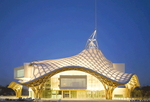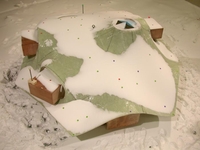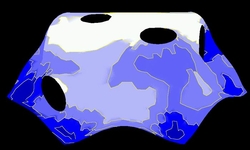Metz Pompidou Centre, a museum exposed to wind and snow
The Paris Pompidou Centre contains 65 000 works of art! But the it can "only" display 1,300 of them. The Metz Pompidou Centre will mitigate this problem by exhibiting many rarely shown works of art, some of which are very large.
CSTB carried out climatic studies in 2006 focused on the stretched fabric roof covering all spaces in the Pompidou Centre, and on the structural envelope and glass facades. Wind forces were studied in the CSTB Jules Verne wind tunnel in Nantes, on a 1:200 scaled model instrumented with 400 pressure sensors. One of the aims of this new Pompidou Centre is to open up the artistic world to the general public and particularly to present works outside the museum, in open spaces of the building or in the courtyard. This is why the client and the project manager wanted to take special care to make users comfortable in outdoor spaces. CSTB thus also used this model to study the climatic environments of the project.
In carrying out the study of the distribution of snow loads due to accumulation and redistribution phenomena as a result of wind, CSTB experts combined the statistical analysis of local climatological data (snow and wind) and experimental results of tests carried out on a 1:30 scaled model in a climatic wind tunnel. The experimental phase in the climatic wind tunnel simulated the load on a model of the roof of the Centre using artificial snow. This experimental approach is intended to determine roof load coefficients resulting from unusual snowfall events (wind speed and direction). The results derived from the experimental simulations were then used in a "Monte Carlo" simulation that reproduces the statistical approach of random climatological events. This means that the results can be expressed in terms of reference events with long return periods or very low probabilities, and can therefore be used to design a structure conservatively by increasing these reference loads by an appropriate safety factor.



